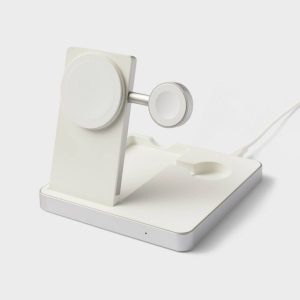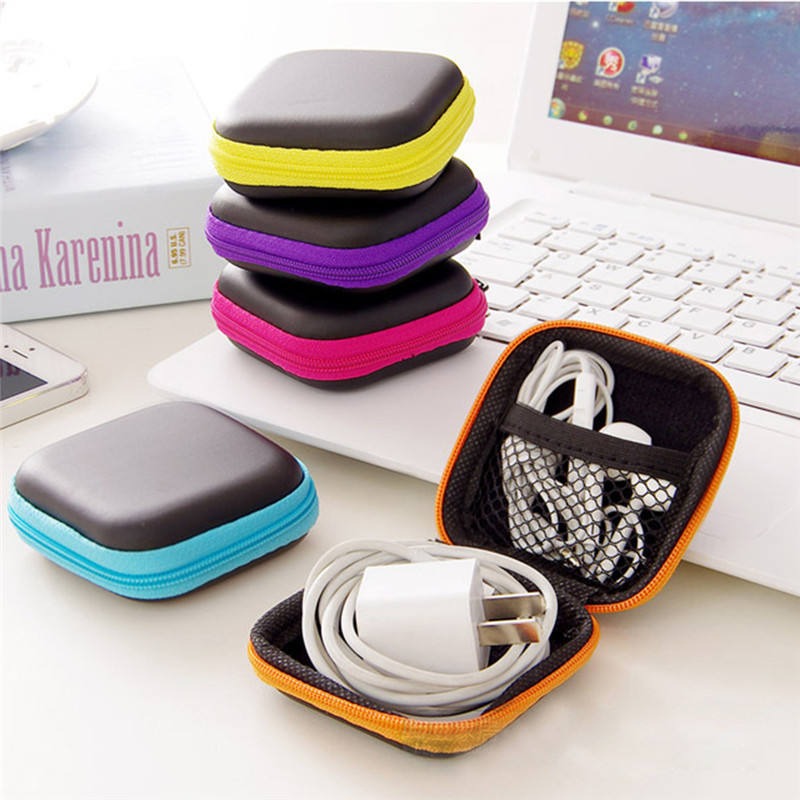Imagine a world where you ditch the tangled mess of charging cables and simply place your phone on a pad to power it up. That’s the magic of wireless chargers! But how does a wireless charger work? Let’s delve into the science behind wireless charging.
The Science Behind the Magic: Electromagnetic Induction
The secret behind wireless charging lies in a scientific principle called electromagnetic induction. Here’s a breakdown:
The Transmitter Coil:
The charging pad, also called the wireless charger base, has a coil of wire. When electricity flows through this coil, it creates a magnetic field.
Magnetic Field on the Move:
This magnetic field isn’t static; it constantly expands and contracts as the electricity alternates current (AC) direction.
The Receiver Coil:
Your phone, or any device compatible with wireless charging, also has a coil of wire embedded inside. This is called the receiver coil.
The Magic Happens: Transferring Energy Wirelessly
When you place your phone on the charging pad, the moving magnetic field from the transmitter coil interacts with the receiver coil in your phone. This creates a phenomenon called induced current.
-
Induced Current Explained: The movement of the magnetic field essentially pushes electrons within the receiver coil of your phone, creating a tiny electric current.
-
Power Up!: This induced current is then used to charge the battery in your phone.
Different Types of Wireless Chargers
Wireless chargers come in various shapes and sizes, but they all utilize the same basic principle of electromagnetic induction. Here are some common types:
-
Charging Pads: These flat pads are the most popular type of wireless charger. Simply place your phone on the pad to initiate charging.
-
Stands: Charging stands hold your phone upright while charging, allowing you to easily view the screen.
-
In-Car Chargers: Wireless car chargers mount securely in your car, enabling you to charge your phone on the go.
 Compatibility: Not All Devices Are Created Equal
Compatibility: Not All Devices Are Created Equal
While wireless charging is becoming increasingly common, it’s important to note that not all devices are compatible. Here’s what you need to consider:
-
Qi Standard: The most widely used wireless charging standard is Qi (pronounced “chee”). Look for the Qi symbol on your phone and wireless charger to ensure compatibility.
-
Check Your Device: The best way to confirm compatibility is to consult your phone’s user manual or manufacturer’s website.
The Benefits and Limitations of Wireless Charging
Wireless charging offers several advantages, but it also has some limitations. Here’s a balanced view:
Benefits:
-
Convenience: No more fumbling with cables! Simply place your phone down to charge.
-
Reduced Wear and Tear: By eliminating the need to constantly plug and unplug cables, you can minimize wear and tear on your phone’s charging port.
-
Multiple Device Charging: Some wireless chargers can power multiple devices simultaneously.
Limitations:
-
Slower Charging: Wireless charging can sometimes be slower than wired charging.
-
Placement Sensitivity: For optimal charging, your phone needs to be correctly positioned on the charging pad.
-
Heat Generation: Wireless charging can generate some heat, although modern chargers are designed to manage this effectively.
The Future of Wireless Charging
Wireless charging technology is constantly evolving. Here are some exciting possibilities for the future:
-
Faster Charging Speeds: Researchers are working on developing wireless charging solutions that match or even surpass the speed of wired charging.
-
Long-Range Charging: Imagine charging your devices from a distance without needing a charging pad. Long-range charging technology is under development.
-
Wider Device Compatibility: We can expect more and more devices, beyond smartphones, to be compatible with wireless charging in the future.
In conclusion, wireless charging offers a convenient and cable-free way to power your devices. By understanding the science behind it and considering the benefits and limitations, you can decide if wireless charging is the right choice for you.

Safety Considerations with Wireless Charging
Wireless charging is a convenient technology, but it’s important to use it safely. How does a wireless charger work?Here are some things to keep in mind:
-
Heat Dissipation: Wireless charging can generate some heat, especially during fast charging. Avoid using a wireless charger in a hot environment or under direct sunlight.
-
Case Compatibility: Some thick phone cases can affect charging efficiency or heat dissipation. Check your charger’s manual for recommendations on case compatibility.
-
Foreign Objects: Metallic objects or magnetic strips placed between the phone and charger can interfere with charging or damage the device.
-
Choose Certified Chargers: Opt for wireless chargers that are certified by reputable organizations to meet safety standards.
Making the Most of Wireless Charging:how does a wireless charger work?
Here are some tips to optimize your wireless charging experience:
-
Start with a Full Charge: Wireless charging can be slightly less efficient than wired charging. Starting with a full charge can help maximize battery life.
-
Power Source Matters: For faster wireless charging, ensure your charger is plugged into a power source with a sufficient output.
-
Keep It Clean: Dust or debris on the charging pad can affect charging efficiency. Wipe down the charging surface regularly with a soft, dry cloth.
By following these tips, you can ensure safe and efficient wireless charging for your devices.
Beyond the Basics: Exploring Advanced Wireless Charging Concepts
While the core principle of electromagnetic induction applies to most wireless chargers, there are some additional aspects to consider:
-
Foreign Object Detection (FOD): Modern wireless chargers often have built-in FOD technology. This prevents the charger from activating if it detects foreign objects like coins or keys between the charging pad and the device. This helps avoid overheating and potential damage.
-
Resonant Charging: A variation of wireless charging, resonant charging uses a specific frequency to transfer energy. The transmitter coil and receiver coil need to be tuned to the same resonant frequency for charging to occur. This allows for more flexibility in placement compared to traditional wireless charging, as long as the devices are within close proximity.
-
Magnetic Resonance Imaging (MRI) Safety: While safe for everyday use, some concerns exist about using wireless charging devices near medical equipment like MRIs. The strong magnetic fields used in MRIs can interact with certain wireless chargers and potentially damage them. It’s always best to follow hospital guidelines and remove your phone and any wireless charging accessories before undergoing an MRI scan.
The Future of Wireless Charging: how does a wireless charger work?
The world of wireless charging is constantly evolving. Here are some exciting possibilities for the future:
-
Improved Charging Speeds: Researchers are developing methods to boost wireless charging speeds, potentially reaching or exceeding wired charging speeds.
-
Long-Distance Charging: Imagine a world where your devices charge automatically as you walk into a room! Long-distance charging technology is under development, which would eliminate the need for charging pads altogether.
-
Wider Device Compatibility: We can expect more and more devices beyond smartphones and tablets to be compatible with wireless charging in the future. Imagine charging your laptop or even electric vehicles wirelessly!
In conclusion, wireless charging offers a convenient and cable-free way to power your devices. By understanding the core principles, safety considerations, and future possibilities, you can decide if wireless charging is the right fit for you. How does a wireless charger work? You can find the answer on our website.










